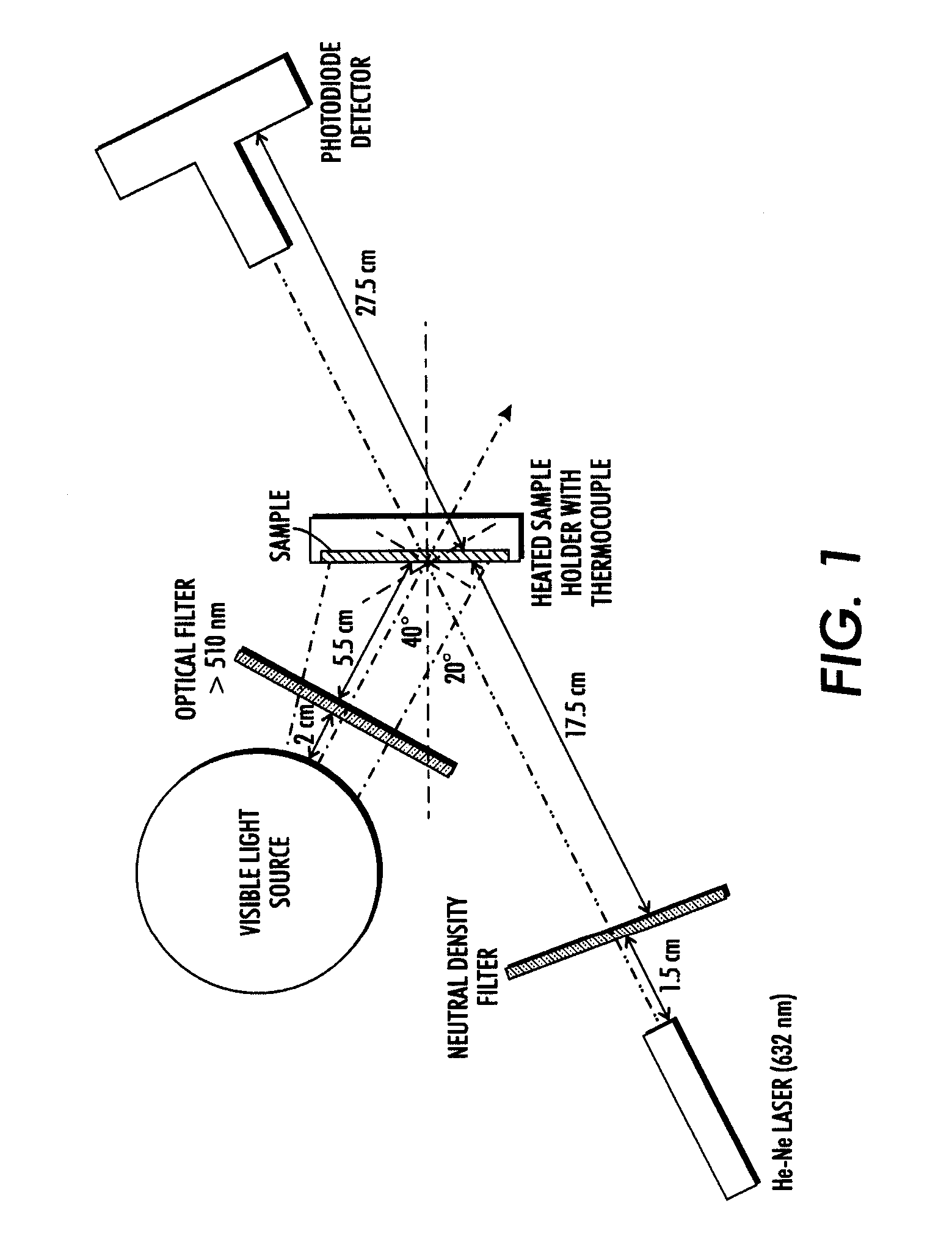Inkless reimageable printing paper and method
a reimageable paper and inkjet technology, applied in the field of inkless reimageable printing paper, can solve the problems of high replacement cost of inkjet cartridges, high cost of replacement inkjet cartridges, and high cost of printers, and achieve the effect of allowing reimaging of paper
- Summary
- Abstract
- Description
- Claims
- Application Information
AI Technical Summary
Benefits of technology
Problems solved by technology
Method used
Image
Examples
example 1
[0085]
[0086]A photochromic material of general formula [I] (3,3′-(perfluorocyclopent-1-ene-1,2-diyl)bis(2-methoxy-5-phenylthiophene)) where substituents [a] and [d] are the same and the alkoxy substituents of R4 and R8 contain fewer then 3 carbon atoms, was synthesized according to the procedure described in “Dithienylethenes with a Novel Photochromic Performance”, J. Org. Chem., 2002, 67, 4574-4578.
[0087]Photochromic paper media was prepared as follows. A solution was made by dissolving 200 mg of the photochromic material in 10 ml of a solution of polymethylmethacrylate (PMMA-polymeric binder) dissolved in toluene (PMMA / Toluene=15 g / 120 ml). The solution is then coated onto Xerox 4024 paper by doctor blade procedure. The coated paper was allowed to dry, to provide a reimageable paper media, ready for printing. Several sheets of paper were coated in this way.
[0088]One sheet of the coated paper was printed by illumination through a mask containing a text to be displayed, by exposure ...
example 2
[0089]A photochromic material (3,3′-perfluorocyclopent-1-ene-1,2-diyl)bis(2-(cyclohexyloxy)-5-phenylthiophene) where substituents [a] and [d] are the same and have greater than 3 carbon atoms on the alkoxy substituents of R4 and R8, was synthesized as described below. Attachment of 3-bromo-2-(cyclohexyloxy)-5-phenylthiophene to octaflurocyclopentene was preformed according to the procedure described in “Dithienylethenes with a Novel Photochromic Performance”, J. Org. Chem., 2002, 67, 4574-4578.
Cyclohexyl 4-oxo-4-phenylbutanoate: In a 2 L 3-neck round-bottomed flask at ambient temperature was added 4-oxo-4-phenylbutanoic acid (41 g, 230 mmol) in dichloromethane (1.5 L) to give a colorless hazy solution. DCC (47.5 g, 230 mmol) was added, then cyclohexanol (23.05 g, 230 mmol) was added. The mixture was stirred at RT for 3 h and then DMAP was added (2.81 g, 23 mmol). The reaction was stirred at ambient temperature for 24 h and the solvent was concentrated to ˜400 ml by distillation and ...
example 3
[0091]A photochromic material (2-tert-butoxy-3-(3,3,4,4,5,5-hexafluoro-2-(2-methoxy-5-phenylthiophen-3-yl)cyclopent-1-enyl)-5-phenylthiophene) where substituents [a] and [d] are different and where [a] has fewer than 3 carbon atoms on the alkoxy group R4 and [d] has greater than 3 carbon atoms on the alkoxy substituent R8 was synthesized as described below.
2-tert-butoxy-3-(3,3,4,4,5,5-hexafluoro-2-(2-methoxy-5-phenylthiophen-3-yl)cyclopent-1-enyl)-5-phenylthiophene: To a 250 mL flame dried round-bottomed flask under argon was added 3-bromo-2-methoxy-5-phenylthiophene (2.518 g, 9.36 mmol) in anhydrous THF (100 ml) to give a colorless solution. The mixture was cooled to −70 deg / C. and n-Butyllithium 2.5M hexanes (3.93 ml, 9.82 mmol) was added dropwise. The solution was stirred at −70 deg / C. for 45 min. In a separate flame dried 3 neck 500 mL round-bottomed flask under argon was added perfluorocyclopent-1-ene (4.02 ml, 29.9 mmol) in anhydrous THF (250 ml) to give a colorless solution. ...
PUM
 Login to View More
Login to View More Abstract
Description
Claims
Application Information
 Login to View More
Login to View More - R&D
- Intellectual Property
- Life Sciences
- Materials
- Tech Scout
- Unparalleled Data Quality
- Higher Quality Content
- 60% Fewer Hallucinations
Browse by: Latest US Patents, China's latest patents, Technical Efficacy Thesaurus, Application Domain, Technology Topic, Popular Technical Reports.
© 2025 PatSnap. All rights reserved.Legal|Privacy policy|Modern Slavery Act Transparency Statement|Sitemap|About US| Contact US: help@patsnap.com



